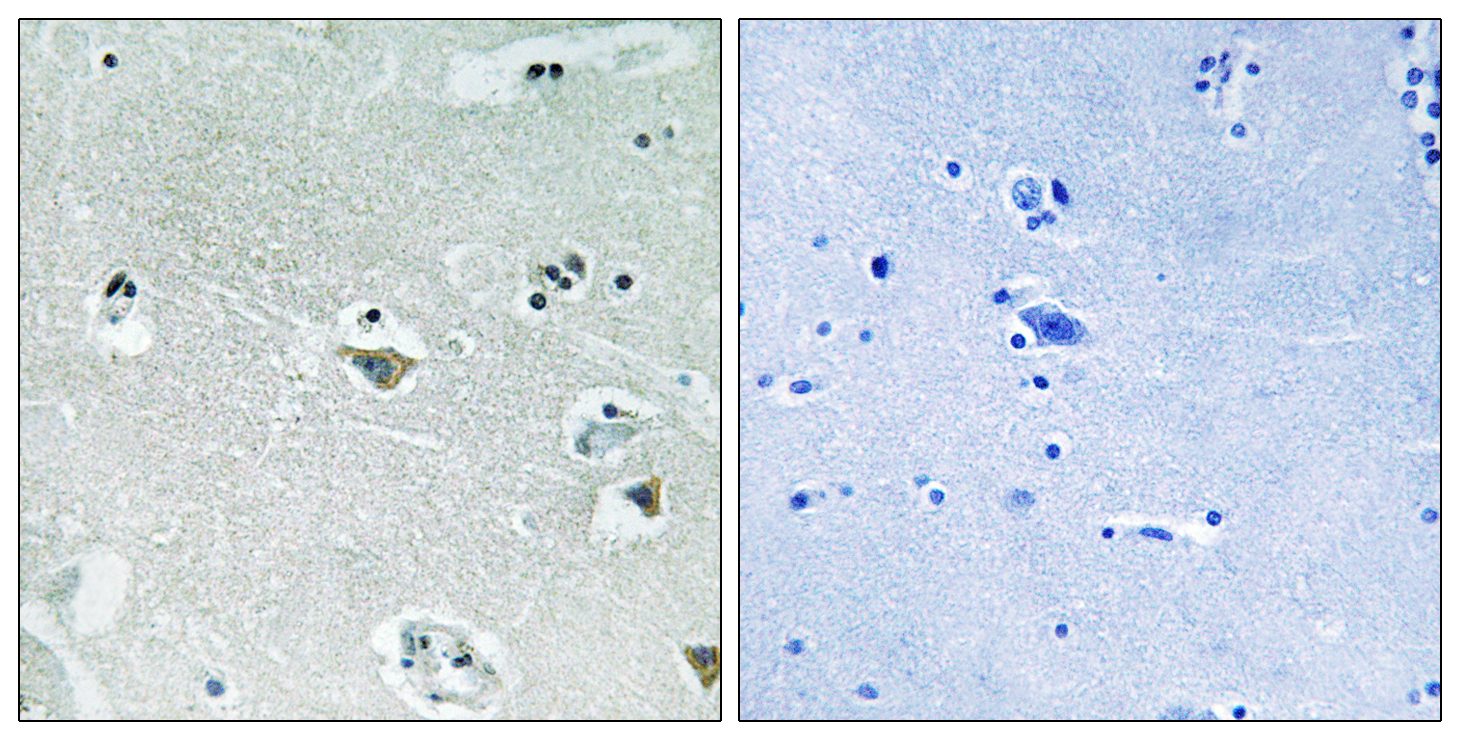
Catalog: YM4251
Size
Price
Status
Qty.
200μL
$600.00
In stock
0
100μL
$340.00
In stock
0
40μL
$190.00
In stock
0
Add to cart


Collected


Collect
Main Information
Target
SREBP-1
Host Species
Mouse
Reactivity
Human, Mouse, Rat,
Applications
WB, IF, ELISA
MW
121kD (Calculated)
140kD (Observed)
Conjugate/Modification
Unmodified
Detailed Information
Recommended Dilution Ratio
WB 1:500-2000; IF 1:100-500; ELISA 1:1000-5000;
Formulation
PBS, 50% glycerol, 0.05% Proclin 300, 0.05%BSA
Specificity
This antibody detects endogenous levels of SREBP-1 protein.
Purification
The antibody was affinity-purified from ascites by affinity-chromatography using specific immunogen.
Storage
-15°C to -25°C/1 year(Do not lower than -25°C)
MW(Calculated)
121kD
MW(Observed)
140kD
Modification
Unmodified
Clonality
Monoclonal
Clone Number
PTR1391
Related Products
Antigen&Target Information
Immunogen:
AA range: 1-100
show all
Specificity:
This antibody detects endogenous levels of SREBP-1 protein.
show all
Gene Name:
SREBF1 BHLHD1 SREBP1
show all
Protein Name:
SREBP-1
show all
Other Name:
Sterol regulatory element-binding protein 1 (SREBP-1) (Class D basic helix-loop-helix protein 1) (bHLHd1) (Sterol regulatory element-binding transcription factor 1) [Cleaved into: Processed sterol regulatory element-binding protein 1]
show all
Background:
This gene encodes a transcription factor that binds to the sterol regulatory element-1 (SRE1), which is a decamer flanking the low density lipoprotein receptor gene and some genes involved in sterol biosynthesis. The protein is synthesized as a precursor that is attached to the nuclear membrane and endoplasmic reticulum. Following cleavage, the mature protein translocates to the nucleus and activates transcription by binding to the SRE1. Sterols inhibit the cleavage of the precursor, and the mature nuclear form is rapidly catabolized, thereby reducing transcription. The protein is a member of the basic helix-loop-helix-leucine zipper (bHLH-Zip) transcription factor family. This gene is located within the Smith-Magenis syndrome region on chromosome 17. [provided by RefSeq, Mar 2016],
show all
Function:
Alternative products:Additional isoforms seem to exist,Function:Transcriptional activator required for lipid homeostasis. Regulates transcription of the LDL receptor gene as well as the fatty acid and to a lesser degree the cholesterol synthesis pathway (By similarity). Binds to the sterol regulatory element 1 (SRE-1) (5'-ATCACCCCAC-3'). Has dual sequence specificity binding to both an E-box motif (5'-ATCACGTGA-3') and to SRE-1 (5'-ATCACCCCAC-3').,online information:Sterol regulatory element-binding protein entry,PTM:At low cholesterol the SCAP/SREBP complex is recruited into COPII vesicles for export from the ER. In the Golgi complex SREBPs are cleaved sequentially by site-1 and site-2 protease. The first cleavage by site-1 protease occurs within the luminal loop, the second cleavage by site-2 protease occurs within the first transmembrane domain and releases the transcription factor from the Golgi membrane. Apoptosis triggers cleavage by the cysteine proteases caspase-3 and caspase-7.,sequence Caution:Intron retention.,similarity:Belongs to the SREBP family.,similarity:Contains 1 basic helix-loop-helix (bHLH) domain.,subcellular location:Moves from the endoplasmic reticulum to the Golgi in the absence of sterols.,subunit:Forms a tight complex with SCAP in the ER membrane. Efficient DNA binding of the soluble transcription factor fragment requires dimerization with another bHLH protein. Interacts with LMNA.,tissue specificity:Expressed in a wide variety of tissues, most abundant in liver and adrenal gland. In fetal tissues lung and liver shows highest expression. Isoform SREBP-1C predominates in liver, adrenal gland and ovary, whereas isoform SREBP-1A predominates in hepatoma cell lines. Isoform SREBP-1A and isoform SREBP-1C are found in kidney, brain, white fat, and muscle.,
show all
Cellular Localization:
Membrane
show all
Tissue Expression:
Expressed in a wide variety of tissues, most abundant in liver and adrenal gland (PubMed:8402897). In fetal tissues lung and liver shows highest expression (PubMed:8402897). ; [Isoform SREBP-1A]: Predominates in hepatoma cell lines (PubMed:8402897). Also expressed in kidney, brain, white fat, and muscle (PubMed:8402897). ; [Isoform SREBP-1C]: Predominantly expressed in liver and adipose tissues (PubMed:8402897). Also expressed in kidney, brain, white fat, and muscle (PubMed:8402897).
show all
Research Areas:
>>AMPK signaling pathway ;
>>Insulin signaling pathway ;
>>Insulin resistance ;
>>Non-alcoholic fatty liver disease ;
>>Alcoholic liver disease
>>Insulin signaling pathway ;
>>Insulin resistance ;
>>Non-alcoholic fatty liver disease ;
>>Alcoholic liver disease
show all
Signaling Pathway
Reference Citation({{totalcount}})
Catalog: YM4251
Size
Price
Status
Qty.
200μL
$600.00
In stock
0
100μL
$340.00
In stock
0
40μL
$190.00
In stock
0
Add to cart


Collected


Collect
Recently Viewed Products
Clear allPRODUCTS
CUSTOMIZED
ABOUT US
Toggle night Mode
{{pinfoXq.title || ''}}
Catalog: {{pinfoXq.catalog || ''}}
Filter:
All
{{item.name}}
{{pinfo.title}}
-{{pinfo.catalog}}
Main Information
Target
{{pinfo.target}}
Reactivity
{{pinfo.react}}
Applications
{{pinfo.applicat}}
Conjugate/Modification
{{pinfo.coupling}}/{{pinfo.modific}}
MW (kDa)
{{pinfo.mwcalc}}
Host Species
{{pinfo.hostspec}}
Isotype
{{pinfo.isotype}}
Product {{index}}/{{pcount}}
Prev
Next
{{pvTitle}}
Scroll wheel zooms the picture
{{pvDescr}}







.png)









